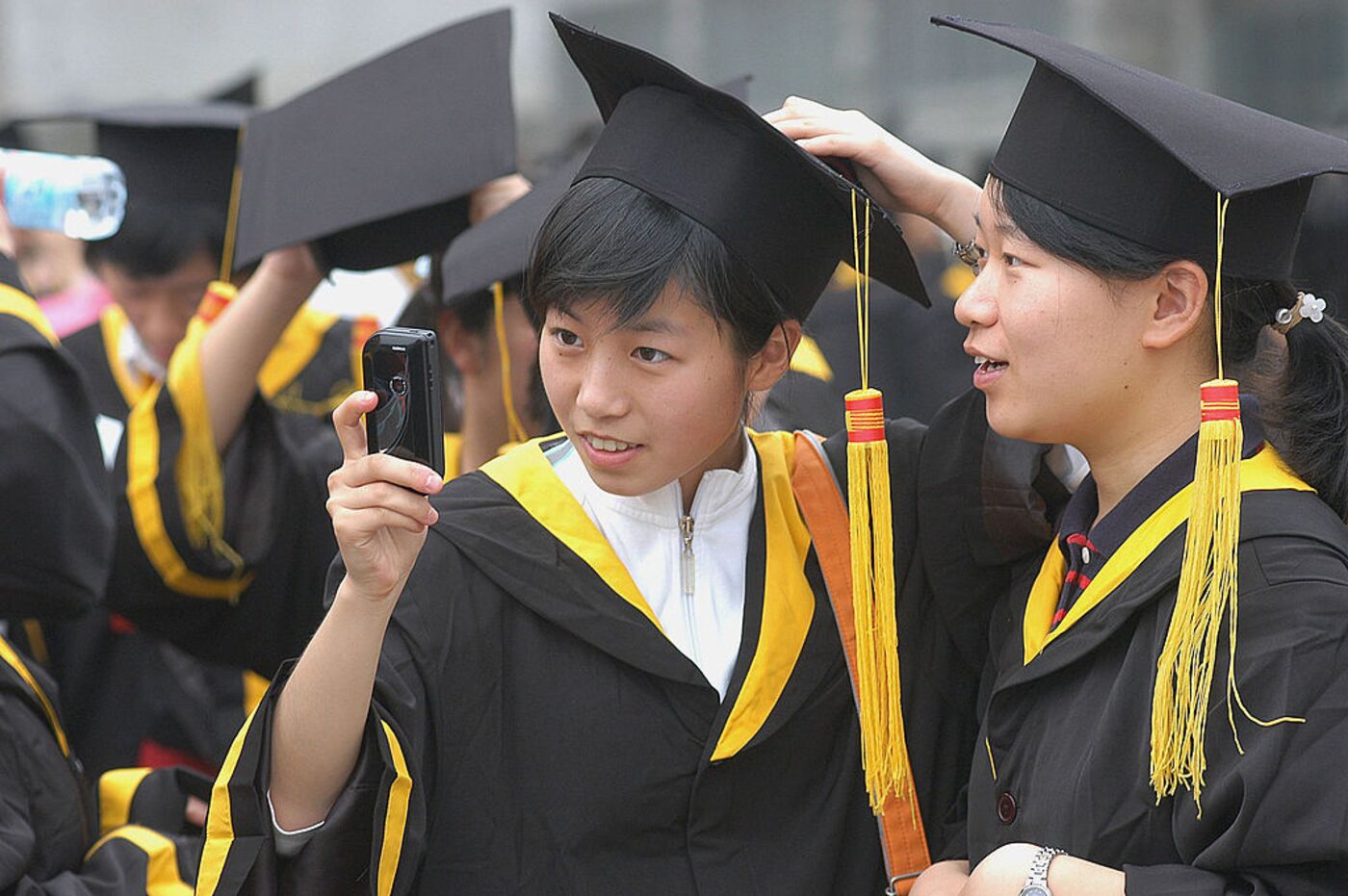
Less than a third of Chinese have some high school education.
Photographer: China Photos/Getty Images
Many investors and economists continue to believe China’s rise to global economic greatness is inevitable. Modern history, however, tells us that graduating from emerging- to a developed-economy status is hardly automatic. An overly intrusive state, dependence on debt, feeble gains in productivity and poor resource allocation are all reasons to fear China might struggle with the transition like so many nations before it.
One potential hurdle may be both the most critical and the most unrecognized: China’s weak human capital. The Chinese workforce may be ill-equipped to compete in the 21st-century global economy due to a lack of education and skills.
That may sound ridiculous. Isn’t China the country that produces schoolchildren with eye-popping math scores and churns out an army of engineers every year? Yes, it is, but those bookworms represent a small subset of the overall workforce. An examination of the population more broadly, especially in the country’s vast rural hinterland, reveals that China compares poorly with many of its peers when it comes to education.
The startling findings can be found in a recent paper by scholars from Stanford University and China’s Shaanxi Normal University. Analyzing Chinese 2015 census data, the authors determined that a mere 30% of the country’s workforce -- defined as all adults aged 25 to 64 -- had some high-school education. Researchers argue that is a sound measure of both those workers’ skills and their ability to learn new ones on the job.
That share compares unfavorably with developed economies, where the comparable average is 78%. The proportion in the most advanced countries, including the U.S., Germany and Japan, is even loftier -- over 90%.
Of course, China is a poorer country and has been for some time, so that disparity may not come as a surprise. However, China also stands up badly against other emerging economies that managed the leap into the rich leagues in the past half century, such as South Korea and Singapore. Those countries enjoyed a much higher level of high-school education before they broke through to developed status –– on average about 72% in 1980.
Nor does China match up especially well with its middle-income competitors. For instance, 46% of the working-age population in Brazil attended high school, 36% in Turkey and 34% in Mexico. China’s share is similar to much poorer Indonesia’s, at 31%.
China’s feeble showing matters. In order to become a more innovative economy, the general workforce requires the skill set to function in the cutting-edge industries of the future. The statistics reveal that millions of Chinese workers may be unfit to support the very high-tech sectors Beijing is striving to develop.
China’s leadership is fully aware of this handicap and has been investing to fix it. The results are promising. Younger Chinese -- those between 25 and 34 years of age -- have a much higher degree of high-school education, at 47%, compared to their elders. Among 15- to 17-year-olds, the rate has soared even higher, to 80%. Clearly, China’s workforce of the tomorrow will be better educated than today’s.
Still, even at that rate, China has a long way to go to reach the levels of an advanced economy. Moreover, the authors of the study note that improvements in healthcare, nutrition and other aspects of child development are needed, especially in rural areas, to ensure the country’s youth are able to learn once they get to high school.
And, for some time to come, a large population of poorly skilled older workers will weigh on China’s economy. only 22% of Chinese workers aged 45-to-54 went to high school. Policymakers, fearful that workers who are unprepared for advanced industries could face widespread joblessness, have wasted untold billions propping up sick state enterprises to keep them employed, undercutting productivity gains and starving the more vibrant private sector of finance.
China’s record suggests that the country has a greater risk of getting stuck in the dreaded “middle-income trap” than many economists believe. Countries that get “trapped” fail to develop a labor force able to compete with the talent of the world’s most advanced economies, while losing their cost advantage to lower-wage nations.
We can already see some signs of that happening with China. The labor-intensive manufacturing that once propelled Chinese incomes has starting decamping for cheaper locales such as Vietnam, while Chinese companies remain heavily dependent on technology imported from the U.S. and other developed countries.
Looking forward, the inadequately educated workforce could be another impediment to Beijing’s plans to challenge the U.S. in technology, despite state subsidies and protection of favored industries. And that could seriously stall China’s overall development. As the authors conclude, “China must significantly raise its level of human capital if it wishes to attain high-income status.” In the end, China can only be as competitive as its people.